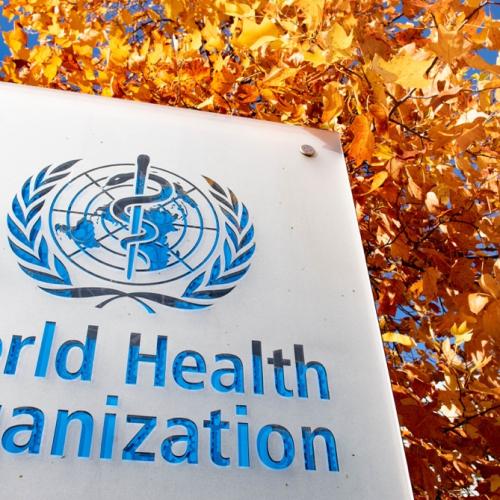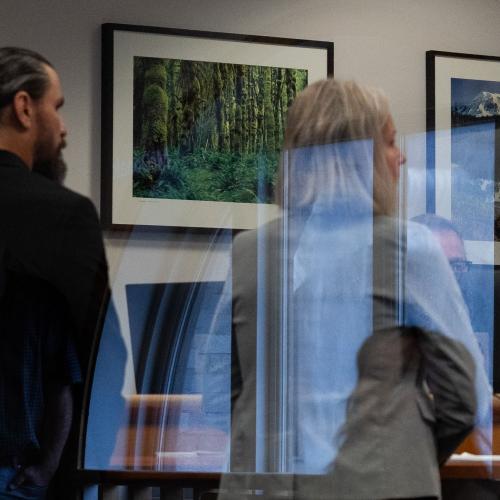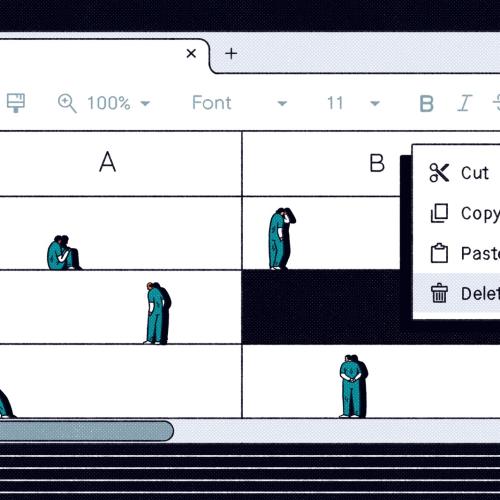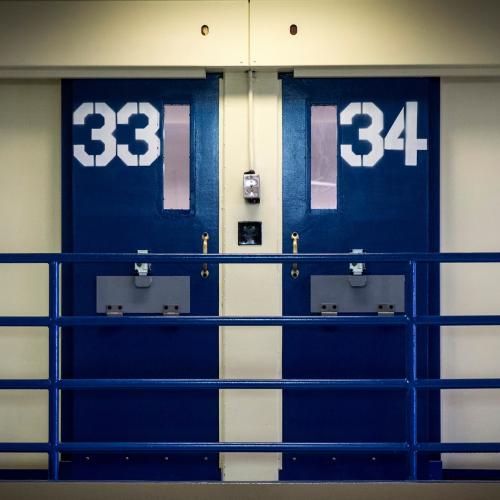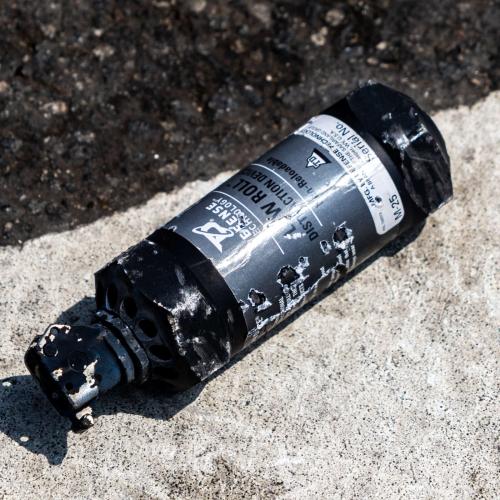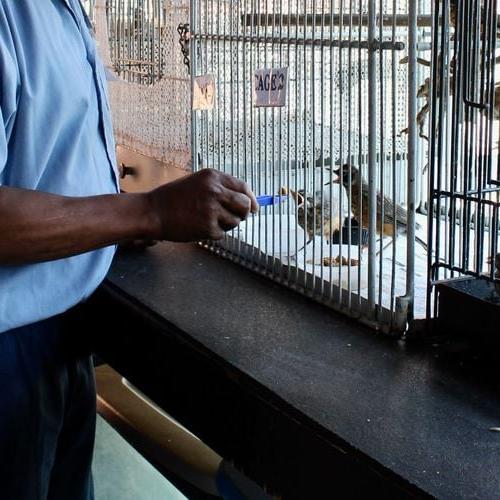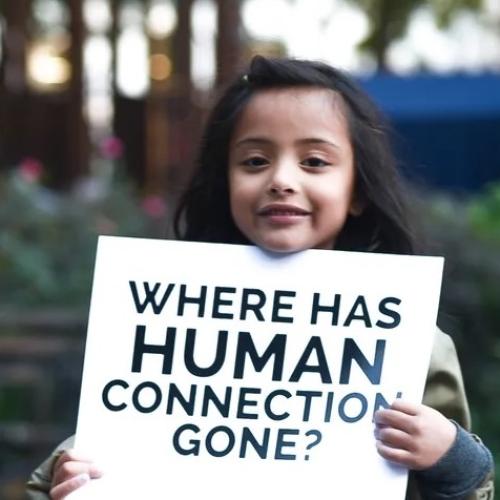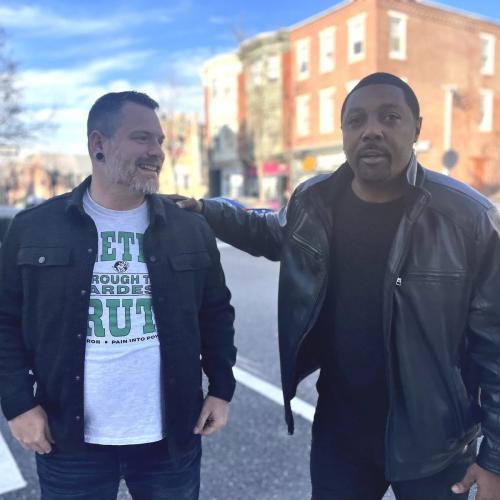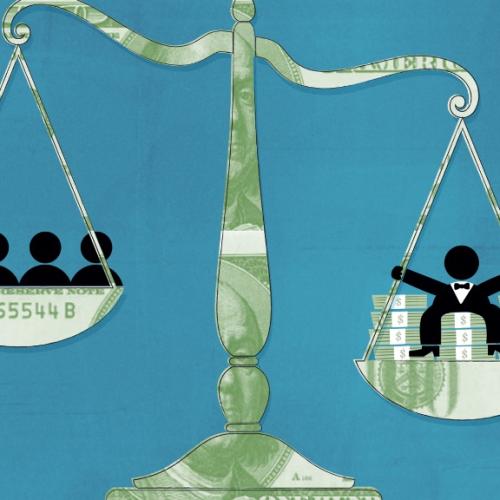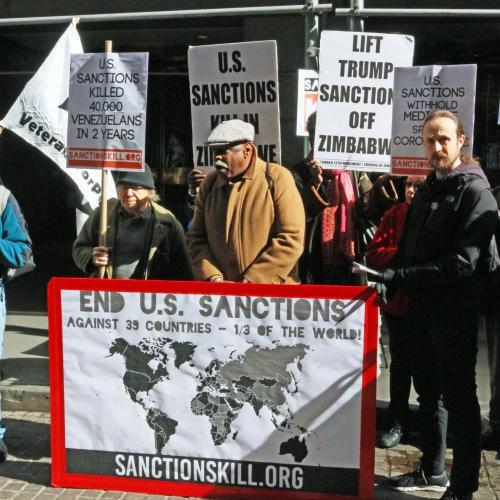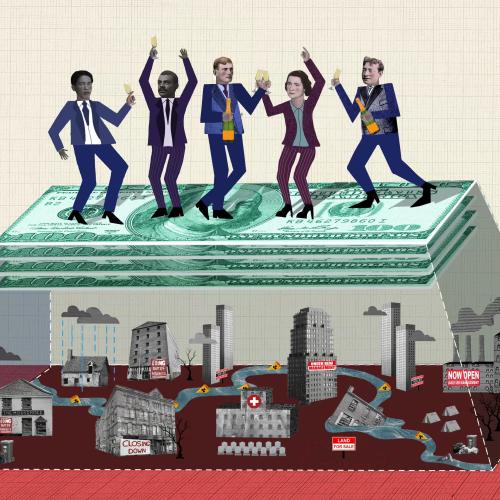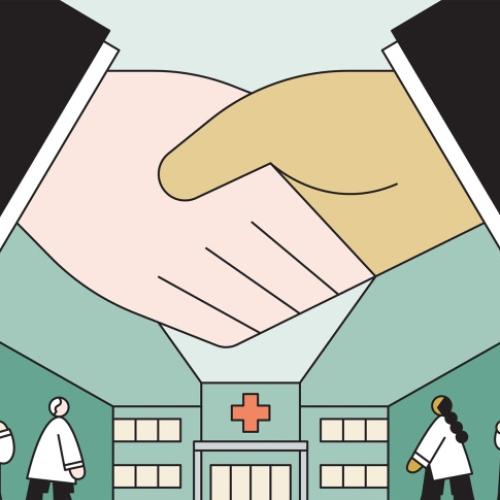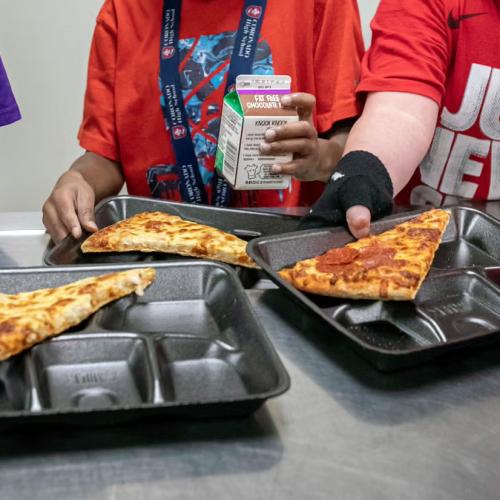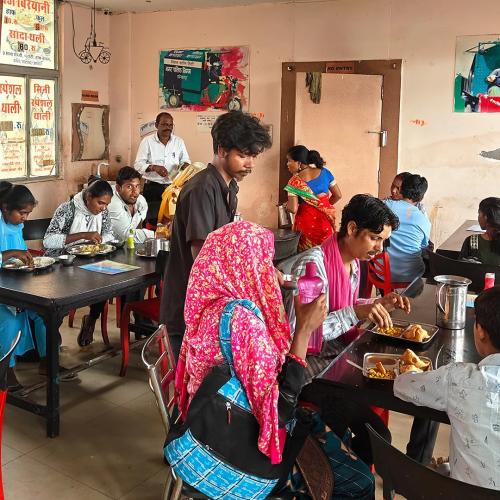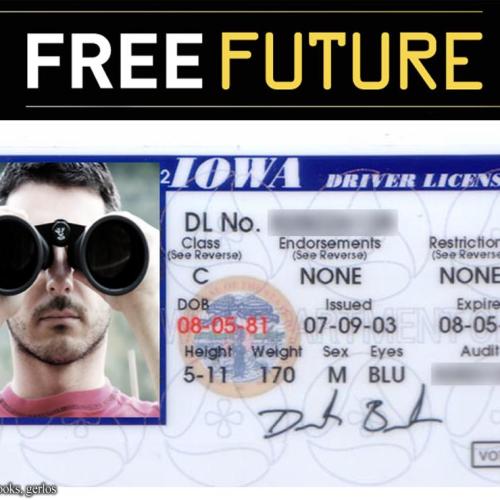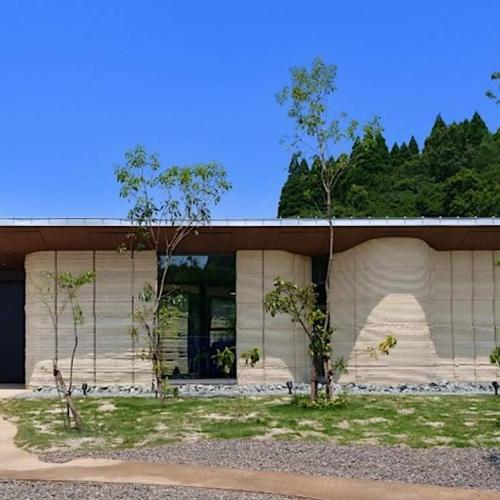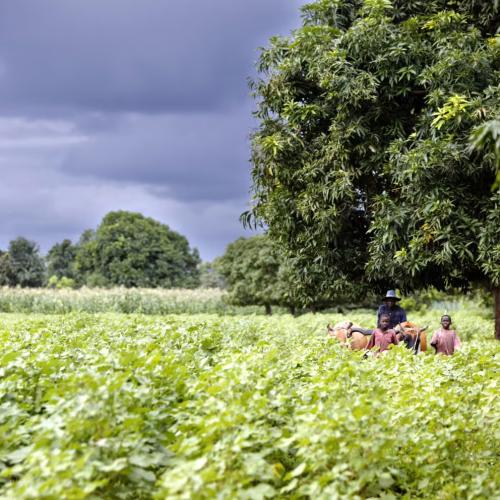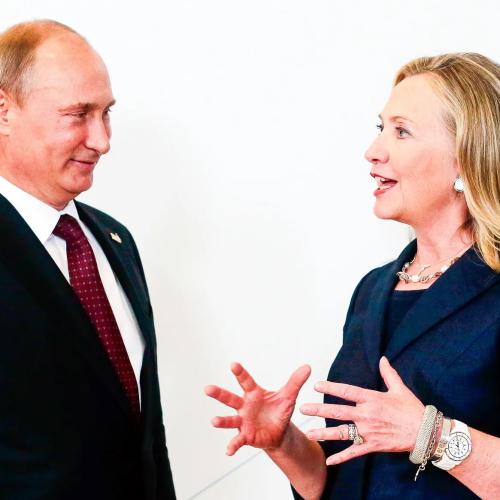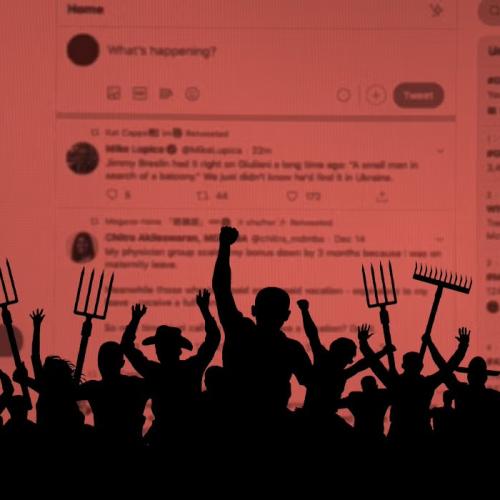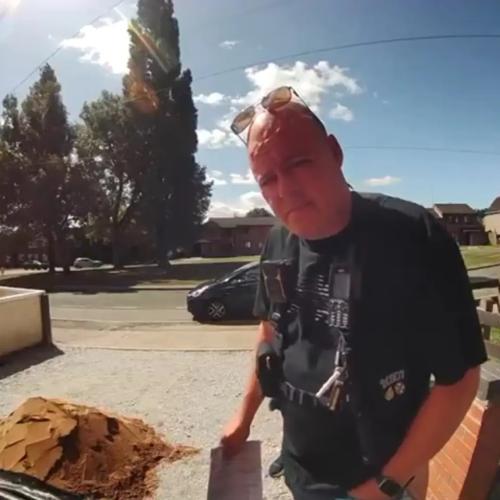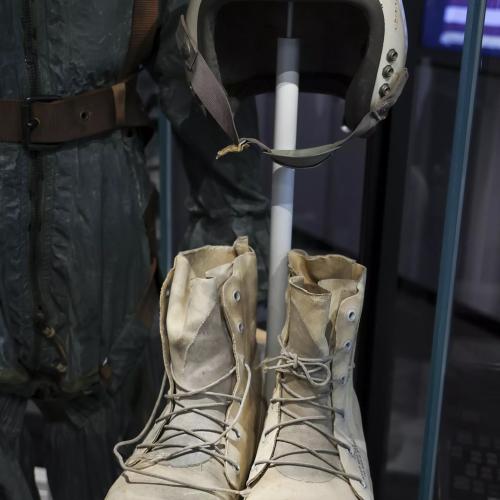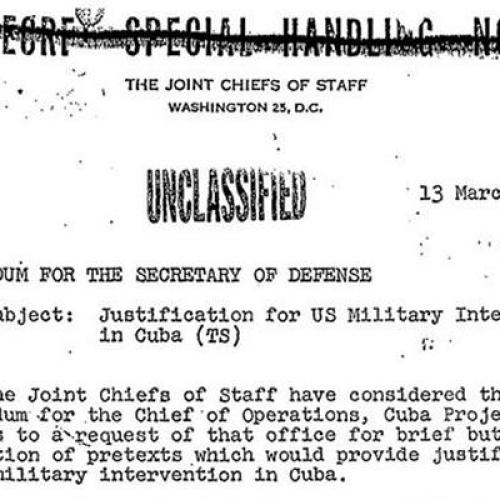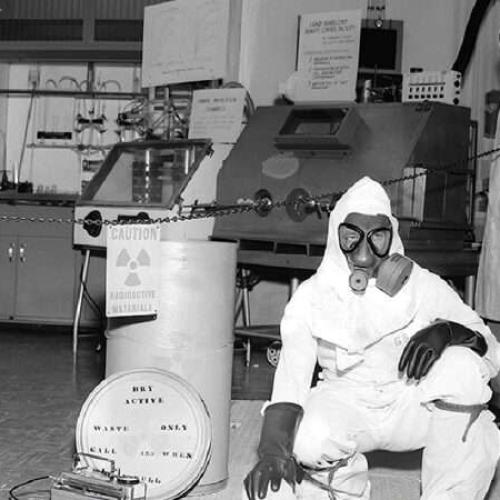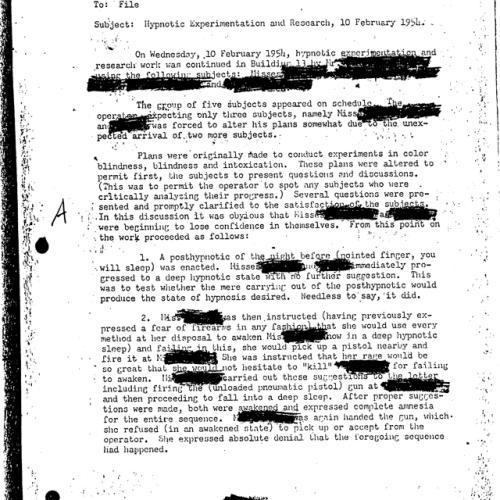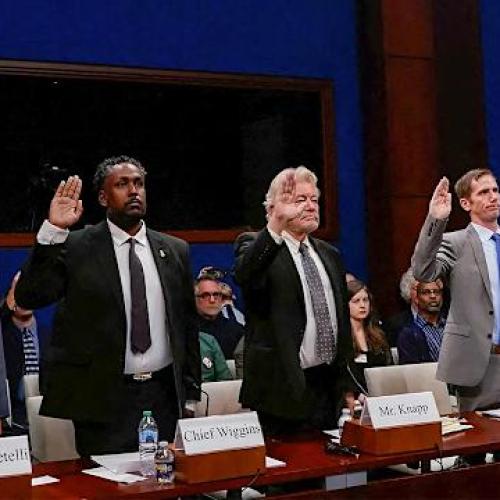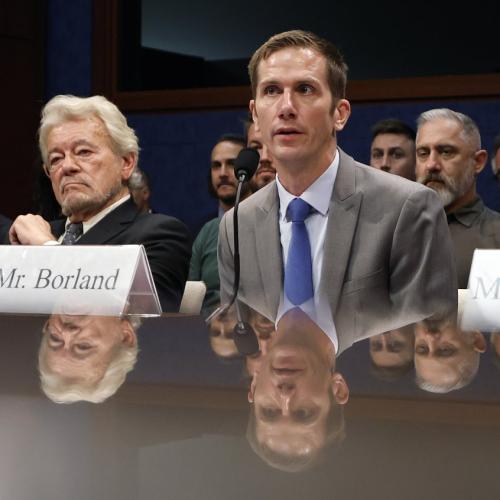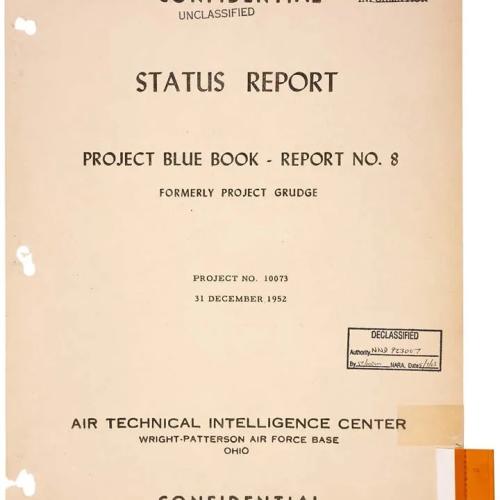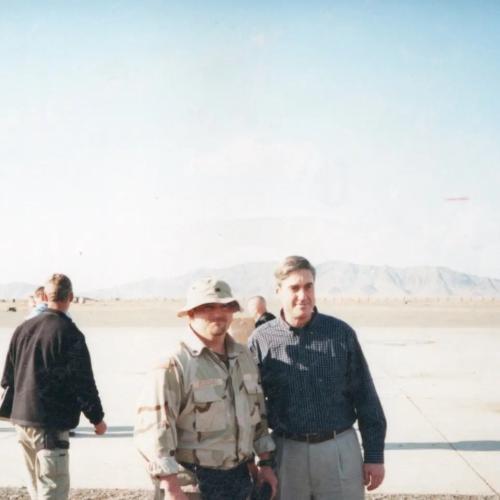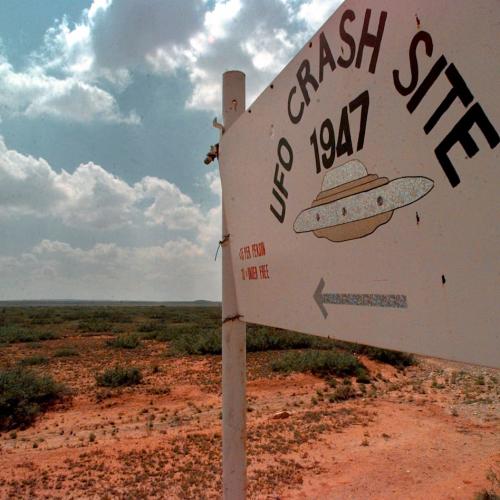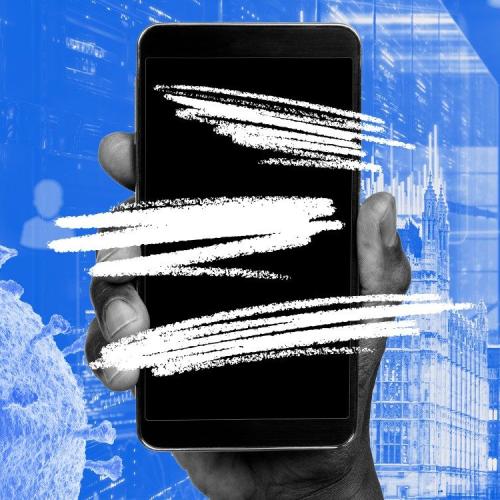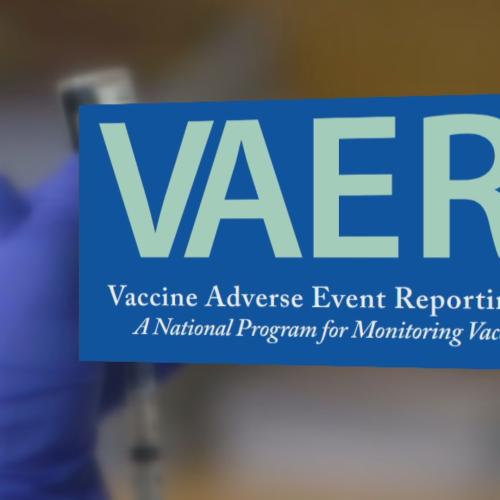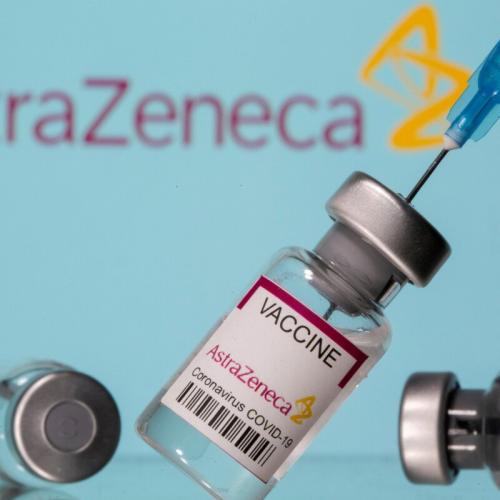Inspiring: Reimagining the Economy Media Articles
Below are key excerpts of inspiring news articles on reimagining the economy from reliable news media sources. If any link fails to function, a paywall blocks full access, or the article is no longer available, try these digital tools.
For further exploration, delve into our Inspiration Center.
Around the world, people have been turning to swapping, trading and bartering during the coronavirus pandemic, whether to do their bit for the local community, save money or simply source hard-to-find baking ingredients. With economic uncertainty looming and anxiety levels soaring, barter is becoming an emerging alternative solution to getting by – and staying busy. The increase in bartering is nowhere better exemplified than in Fiji. The country has a long tradition of barter, known as ‘veisa’ ... and Fijians have harnessed modern technology to connect even more people. “I knew that money would be tight to stretch out and even harder to come by. I asked myself what happens when there’s no more money? Barter was a natural solution to that,” says Marlene Dutta, who started the Barter for a Better Fiji group on 21 April. Its membership is just under 190,000 – more than 20% of Fiji’s population. Items changing hands have run the gamut – pigs for kayaks, a violin for a leather satchel and doughnuts for building bricks – but the most commonly requested items have been groceries and food. Bartering isn’t just for individuals looking for baking items or help with grocery shopping, however. Businesses are increasingly interested in joining barter exchanges, which have “doctors, lawyers, service companies, retailers – you name it”, says Ron Whitney, President of the US-based International Reciprocal Trade Association, a non-profit organisation founded in 1979 that promotes and advances modern trade and barter systems.
Note: Explore a treasure trove of concise summaries of incredibly inspiring news articles which will inspire you to make a difference.
Another trend has entered the urban agricultural scene: agrihoods, short for agricultural neighborhoods. The Urban Land Institute defines agrihoods as master-planned housing communities with working farms as their focus. Overwhelmingly, they have large swaths of green space, orchards, hoop houses and greenhouses, and some with barns, outdoor community kitchens, and environmentally sustainable homes decked with solar panels and composting. Agrihoods, which number about 90 nationwide, are typically in rural and suburban areas. Within the city of Detroit, home to nearly 1,400 community gardens and farms, there is one officially designated agrihood, Michigan Urban Farming Initiative. The Michigan initiative is a 3-acre farm focusing on food insecurity in one of Detroits historic communities that was once home to a thriving Black middle class. Now the median home value is under $25,000, and about 35% of the residents are homeowners. The Detroit agrihood model plans to provide a Community Resource Center with educational programs and meeting space across from the garden, a caf, and two commercial kitchens. For us, food insecurity is the biggest issue, says, Quan Blunt, the Michigan initiatives farm manager. The closest [fresh] produce store to this neighborhood is Whole Foods [4 miles away in Midtown], and you know how expensive they can be. At MUFI, produce is free to all. The farm is open for harvesting on Saturday mornings.
Note: Explore a treasure trove of concise summaries of incredibly inspiring news articles which will inspire you to make a difference.
The Standing Rock movement in 2016 brought together Indigenous activists from across the nation to fight against the Dakota Access Pipeline. One of the demands of this movement included divestment from Wells Fargo, a bank that was funding development of the pipeline. This brought into the spotlight ... big for-profit banks that the government uses to invest public money into Wall Street, rather than local communities. Some of those investments include the fossil fuel industry, private prisons, immigrant detention centers, and more. The divestment movement is mostly about getting those government investments ... out of the big banks. The question then becomes where to put them. Some ... say the answer is public banking. In September, the California State Legislature passed Assembly Bill 857, a law that would allow a regulatory framework for public banking in the state. This would allow the establishment of banks that hold the governments money and include socially responsible charters. Debbie Notkin, who works with the California Public Banking Alliance, says that by law, all corporations, which includes private banks, are legally obligated to maximize profit. Public banks are not held to this expectation, however, and are instead mandated to serve their communities. Community investments have unlimited possibilities, including affordable housing, saving people from foreclosure, making student loans more affordable, and creating more infrastructure to defend against the effects of climate change.
Note: Ellen Brown is a dedicated researcher who has promoted public banks for years. Check out her excellent work on her website at https://ellenbrown.com. Explore a treasure trove of concise summaries of incredibly inspiring news articles which will inspire you to make a difference.
A Danish bank has launched the worlds first negative interest rate mortgage handing out loans to homeowners where the charge is minus 0.5% a year. Negative interest rates effectively mean that a bank pays a borrower to take money off their hands, so they pay back less than they have been loaned. Jyske Bank, Denmarks third largest, has begun offering borrowers a 10-year deal at -0.5%, while another Danish bank, Nordea, says it will begin offering 20-year fixed-rate deals at 0% and a 30-year mortgage at 0.5%. Under its negative mortgage, Jyske said borrowers will make a monthly repayment as usual but the amount still outstanding will be reduced each month by more than the borrower has paid. The mortgage is possible because Denmark, as well as Sweden and Switzerland, has seen rates in money markets drop to levels that turn banking upside-down. Hegh said Jyske Bank is able to go into money markets and borrow from institutional investors at a negative rate, and is simply passing this on to its customers. In Denmark, interest rates on savings deposited in Jyske ... have already fallen to zero. In reality, the Jyske mortgage borrower in Denmark is likely to end up paying back a little more than they borrowed, as there are still fees and charges to pay to compensate the bank for arranging the deal, even when the nominal rate is negative.
Note: Explore a treasure trove of concise summaries of incredibly inspiring news articles which will inspire you to make a difference.
The chain of command at PV Squared, a solar panel installation company in Massachusettss Pioneer Valley, is admittedly convoluted. Technically, Im Kims boss, says general manager Jonathan Gregory of bookkeeper Kim Pinkham. But Kims on the board, and the board oversees my position, so technically shes my boss. As members of a worker-owned cooperative, the 40-plus employees elect their own board of directors and make decisions based not on majority rule, but by consensus. When theyre not holding the microphone, members at meetings express themselves with hand signals: a flat palm for a question or statement, a raised index finger for direct response, and a hand cupped in a C for a clarification. Currently, worker-owned entities employ about 17 million people, or 12% of the U.S. workforce. Such business can take a variety of forms, from equity-sharing plans like those found at Publix super markets, Land OLakes, and King Arthur Flour, to more radical models, like at PV Squared. By far the most common are employee stock ownership plans, or ESOPs. On the other end of the spectrum are workers collectives ... where there is no hierarchy. Collective Copies, a copy shop with 11 workers and locations in Amherst and Florence, Massachusetts, operates according to this model. After a trial period of six months, new hires are invited to become owners. Everyones on the board of directors, says Matt Grillo, a worker-owner who has been with Collective Copies for 20 years.
Note: Explore a treasure trove of concise summaries of incredibly inspiring news articles which will inspire you to make a difference.
Time banks offer an alternative, powered by 21st-century technology, to the U.S. dollar. About 70 exist across the country — some with a few members, others with hundreds — to give value to work that members say often goes uncompensated in a traditional market economy. The Silver Spring Time Bank formed in 2015 and has about 300 members, said co-founder Mary Murphy. Last year, she said, 1,000 hours were exchanged for basic home repairs, dog walking, cooking and tailoring, among other services, without the exchange of money. “You get to save that money that you would have spent,” she said. “You get to meet somebody else in your community and get to know that person. That's a bonus.” Edgar S. Cahn, an 84-year-old law professor who had worked on civil rights and anti-poverty legislation in president Lyndon B. Johnson’s Justice Department, suffered a heart attack in 1980. He said doctors gave him two years to live, with “maybe two good hours a day. I thought: What do I do with two good hours a day?” he said, having beaten doctors’ expectations by nearly four decades. “I have to teach people to value themselves ... We’re all trained as human service professionals: 'How can I help you?'' ” he said. “None of us is trained to say: ‘How can you make a difference?’ I need you as much as you need me.” Cahn became a proselytizer for what he called the “time dollar” — a currency in which an hour of work is worth an hour of work, whether it’s performed by a maid, a mechanic or a mechanical engineer. In 1995, he founded the D.C. nonprofit TimeBanks USA, which developed the software used by many time banks around the world. Time banks can serve as small-business incubators and a way for seniors to remain active after retirement.
Note: Read more about the potential of time banking. Explore more positive stories like this in on reimagining the economy.
The world looks a little brighter from the front porch of your own home. It's a sight more than 200 formerly homeless people are waking up to each morning at the Community First! Village in Austin, Texas. And they can take their time getting used to it; residents are invited to stay for the rest of their lives. Community First! Village is built and run by the nonprofit Mobile Loaves & Fishes to lift the most chronically homeless off the streets and into a place they can call home. They live in about 100 RVs and 125 micro homes arranged on streets with names like "Peaceful Path" and "Goodness Way." Heavy machinery has broken ground on the neighboring 24 acres to add another 310 housing units. When complete, Mobile Loaves and Fishes believes it will be able to provide permanent homes for approximately 40% of the chronically homeless in Austin. The 51-acre planned village was designed to create a sense of community. The homes are "micro" on purpose, providing just enough comfort and privacy but small enough to encourage the owners to step outside. There they find front porches dotted along stone-paved paths that lead to community kitchens, laundry and wash rooms, meeting halls, playgrounds, a dog park, a barber shop, an outdoor movie theater, a medical facility and a community market. New residents might initially keep to themselves, but it is hard to resist the smell of Texas barbecue on the grill, or the sight of fresh vegetables grown on site and being sliced for the community potluck dinner.
Note: Explore a treasure trove of concise summaries of incredibly inspiring news articles which will inspire you to make a difference.
Finlands much-lauded housing first approach ... has been in place for more than a decade. The idea is simple. To solve homelessness you start by giving someone a home, a permanent one with no strings attached. If they want to drink, they can; if they want to take drugs, thats fine too. Support services are made available to treat addiction, mental health and other problems, and to help people get back on their feet, from assisting with welfare paperwork to securing a job. The housing in Finland is a mix of designated standard apartments sprinkled through the community, and supported housing: apartment blocks with on-site services, built or renovated specifically for chronically homeless people. Formerly homeless residents ... pay rent from their own pockets or through the benefits afforded by Finlands relatively generous welfare state. The approach is working. As homelessness rises across Europe, Finlands numbers are falling. In 1987, there were around 18,000 homeless people. In 2017, there were 7,112 homeless people, of which only 415 were living on the streets or in emergency shelters. The vast majority (84 percent) were staying temporarily with friends or relatives. Between 2008 and 2015, the number of people experiencing long-term homelessness dropped by 35 percent. While its expensive to build, buy and rent housing for homeless people, as well as provide the vital support services, the architects of the policy say it pays for itself. Studies have found housing one long-term homeless person saves society around 15,000 ($17,000) a year ... due to a reduction in their use of services such as hospital emergency rooms, police and the criminal justice system.
Note: Explore a treasure trove of concise summaries of incredibly inspiring news articles which will inspire you to make a difference.
If a slim, yellow envelope with a Rye, N.Y., return address lands in your mailbox this holiday season, dont throw it out. Its not junk. Some 1,300 such envelopes have been sent to New Yorkers around the state, containing the good news that R.I.P. Medical Debt, a New York-based nonprofit organization, has purchased their medical debt and forgiven it. Last spring, Judith Jones and Carolyn Kenyon, both of Ithaca, N.Y., heard about R.I.P. Medical Debt, which purchases bundles of past-due medical bills and forgives them to help those in need. So the women decided to start a fund-raising campaign of their own to assist people with medical debt in New York. The women raised $12,500 and sent it to the debt-forgiveness charity, which then purchased a portfolio of $1.5 million of medical debts on their behalf, for about half a penny on the dollar. Many people take on extra jobs or hours to afford health care, and 11 percent of Americans have turned to charity for relief from medical debts, according to a 2016 poll. It has become increasingly easy for regular citizens to purchase bundles of past-due medical bills and forgive them because of the efforts of the debt-relief charity, which was founded in 2014 by two former debt collection industry executives, Craig Antico and Jerry Ashton. After realizing the crushing impact medical debts were having on millions of Americans, the men decided to flip their mind-set. They began purchasing portfolios of old debts to clear them as a public service, rather than try to hound the debtors.
Note: Explore a treasure trove of concise summaries of incredibly inspiring news articles which will inspire you to make a difference.
Each year, beginning in the fall, a group of third-year architecture students from Auburn University take up residence in a small rural Alabama town to begin building a house. In the winter, when a new semester begins, they are replaced at the Newbern, Alabama, project site by another cohort of 16 students who finish up the job and prepare the house for its new occupants. The 20K Home Project began 13 years ago as a challenge to architecture students at Auburn to build a $20,000 house, with $12,000 in material and $8,000 for labor. The idea was to create the perfect house for needy families in rural areas where dwellings are often substandard and where affordable building can be a logistical challenge. To date, the student-led project has designed and built homes for nearly 30 households as part of Auburns Rural Studio, an off-campus, hands-on architecture program that has also constructed community centers, a library and other projects around Hale County, where Newbern is located. Created in 1993, Rural Studio partners with local nonprofits and uses cash and in-kind donations to cover the cost of the homes. It then makes a gift of the finished houses to low-income Newbern residents. Over the years, Rural Studio has developed design criteria for the homes, which are typically one- or two-bedroom single-family dwellings. In Newbern, a community of just under 200 people in the west-central part of Alabama, the median price of a home is about $65,000.
Note: Explore a treasure trove of concise summaries of incredibly inspiring news articles which will inspire you to make a difference.
The Los Angeles City Council is preparing to ask voters if they want to create a publicly owned bank, something no city or state in the United States has done in nearly a century. Council members voted Tuesday to start the process of putting a measure on the Nov. 6 ballot that would allow for the creation of such a bank by amending the city charter. The move is an early step in council President Herb Wessons plan to create a public bank, which he said could offer accounts to scores of city cannabis businesses that are shunned by commercial banks because of federal drug laws. It also could help finance affordable housing, he said. David Jette, legislative director of advocacy group Public Bank L.A., said putting the issue to a citywide vote could be a make-or-break moment for public banking, an idea that has gained steam since the financial crisis and lately seen an influx of support from the cannabis industry. Los Angeles, Oakland, San Francisco and the state of California are all in the process of studying whether they can or should start public banks, in part to serve cannabis businesses. For now, though, the U.S. has just one public bank: the Bank of North Dakota, established in 1919. Were cautiously ecstatic, Jette said after Tuesdays vote. This will be a referendum on the idea of public banking. I think this is an existential vote for our entire national movement.
Note: The measure was approved and will be on the November ballot for LA voters. For more, see this excellent webpage. Read a revealing article on how the Bank of North Dakota allowed the state to sail through the 2008 financial crisis while all other 49 states suffered. Explore a treasure trove of concise summaries of incredibly inspiring news articles which will inspire you to make a difference.
Sherry Mendowegan has accomplished a lot in the past six months. The mother of two bought her first car and graduated with her high school diploma. Next is my college, post-secondary, and then hopefully I get some work, she says. Going to college would have been out of reach for the 41-year-old just last year. But as a participant in the basic income pilot program launched by the Canadian province of Ontario, she and her husband, Dan, can now afford the tuition fees. Our life has changed, Mendowegan says. Were not struggling. Ontarios basic income program, launched in April 2017, is currently operating in three towns Thunder Bay, Lindsay and Hamilton. The scheme has enrolled more than 4,000 low-income people living on less than CA$34,000 ($29,500) individually. This includes those who are working, in school or living on financial assistance. For three years, single participants will receive up to CA$17,000 a year and couples will receive up to CA$24,000. Those earning any money will see their basic income amounts reduced by 50 cents for every dollar they make. Universal basic income, or the idea of giving people money without any conditions, is not new. But it is gaining fresh momentum globally as inequality worsens and swaths of jobs are at risk from automation and other factors. Ontario joins a handful of other places in the world to test out some sort of guaranteed basic income.
Note: In the US, Stockton, California recently announced plans to provide residents with a Universal Basic Income. Explore a treasure trove of concise summaries of incredibly inspiring news articles which will inspire you to make a difference.
Companies such as Experian, Equifax, and TransUnion are able to store huge quantities of our personal data and profit from it in a way that doesn’t always benefit us. And when those same companies lose our personal data and make us susceptible to identity theft, there’s virtually nothing we can do about it. Several organizations are working on returning the value of your data to you, such as the state of Illinois’ pilot to test a blockchain-based birth registry/ID system. Taking this idea one step further, when you are the sole owner of your personal data on purchases, online browsing history, or mobile data, you can also choose whether or not to “sell” your own data, with rights and restrictions using smart ledgers. This could shift the power of (and profit from) data management from big, established firms back to individual users. This would also shift the responsibility. If you lost your cryptographic “keys,” then they would be truly lost and you would have to build your identity again. Equifax and others have shown the weakness of central databases in the hands of a single firm. Mutual distributed ledger systems have the potential to provide us with identity and activity management, even permitting us to make a market selling information about ourselves, taking control and cash back from companies like Equifax. There will certainly be mistakes along the way, but how can we truly object to reclaiming control of our most private property — our personal data?
Note: This article is also available here. Watch our 13 minute video on the promise of blockchain technology. Explore more positive stories like this on reimagining the economy and technology for good.
We live in a time of massive, unprecedented trade: Goods, information and money all flow across borders almost seamlessly (people, of course, are another matter). While this new era of trade has brought immense prosperity to many ... this transfer of commodities tends to benefit only a tiny sliver of the global population, and the trade system has yet to address this. Those who farm cocoa, palm oil, or soy profit little from global commodity prices or access to new markets instead, they are often forced to sell for less or be forced out of the market. This applies to workers as well, such as the hundreds of thousands working on palm oil plantations in Indonesia, the majority of whom are contract laborers who see few benefits from the multibillion-dollar palm oil trade. The Fair Trade movement started as a response to this global trade paradigm that focused too much on profits and not people. Their goal was to tilt the balance toward farmers and workers, if even just a bit, ensuring they got a decent living. The Fair Trade model proved successful, but it still only operates at the margins. Those of us living in well-off communities can afford the higher premiums of Fair Trade coffee, chocolate and tea, but the vast majority of people ... cannot. This means that, despite the growth of Fair Trade, inequality is getting worse overall. Fair Trade needs to become more than a niche it needs to grow into the norm, a true alternative. And all of us the media, companies, and, yes, the 1 percent, all need to play our role.
Note: Explore a treasure trove of concise summaries of incredibly inspiring news articles which will inspire you to make a difference.
Look at the modus operandi of today’s internet giants — such as Google, Facebook, Twitter, Uber, or Airbnb — and you’ll notice they have one thing in common: They rely on the contributions of users as a means to generate value within their own platforms. All of the profits are captured by the large intermediaries who operate the platforms. Recently, a new technology has emerged that could change this imbalance. Blockchain facilitates the exchange of value in a secure and decentralized manner, without the need for an intermediary. With a blockchain, software applications no longer need to be deployed on a centralized server: They can be run on a peer-to-peer network that is not controlled by any single party. These blockchain-based applications can be used to coordinate the activities of a large number of individuals, who can organize themselves without the help of a third party. Blockchain technology is ultimately a means for individuals to coordinate common activities, to interact directly with one another, and to govern themselves in a more secure and decentralized manner. New forms of organizations ... which have no director or CEO, or any sort of hierarchical structure — are administered, collectively, by all individuals interacting on a blockchain. And since there is no intermediary operator, the value produced within these platforms can be more equally redistributed among those who have contributed to the value creation.
Note: This article is also available here. Watch our 13 minute video on the promise of blockchain technology. Explore more positive stories like this on reimagining the economy and technology for good.
The blockchain is a revolution that builds on another technical revolution so old that only the more experienced among us remember it: the invention of the database. IBM’s database model stood unchanged until about 10 years ago, when the blockchain came into this conservative space with a radical new proposition: What if your database worked like a network — a network that’s shared with everybody in the world, where anyone and anything can connect to it? Blockchain experts call this “decentralization.” Decentralization offers the promise of nearly friction-free cooperation between members of complex networks that can add value to each other by enabling collaboration without central authorities and middle men. In a world without middle men, things get more efficient in unexpected ways. A 1% transaction fee may not seem like much, but down a 15-step supply chain, it adds up. These kinds of little frictions add just enough drag on the global economy that we’re forced to stick with short supply chains and deals done by the container load, because it’s simply too inefficient to have more links in the supply chain and to work with smaller transactions. The decentralization that blockchain provides would change that, which could have huge possible impacts for economies in the developing world. Any transformation which helps small businesses compete with giants will have major global effects.
Note: This article is also available here. Watch our 13 minute video on the promise of blockchain technology. Explore more positive stories like this on reimagining the economy and technology for good.
Consider the Norwegians, who experienced extreme polarization at the same time as the Germans did. The Norwegian economic elite organized against striking laborers and produced a polarized country that included both Nazi Brown Shirts goose-stepping in the streets and Norwegian Communists agitating to overthrow capitalism. The politician Vidkun Quisling, an admirer of Hitler, organized in 1933 a Nazi party, and its uniformed paramilitary wing sought to provoke violent clashes with leftist students. Quisling reportedly held discussions with military officers about a possible coup d’etat.The stage was set for a fascist “solution.” Instead, Norway broke through to a social democracy. Progressive movements of farmers and workers, joined by middle-class allies, launched nonviolent direct action campaigns that made the country increasingly ungovernable by the economic elite. The majority forced the economic elite to take a back seat and invented a new economy with arguably the most equality, individual freedom, and shared abundance the developed world has known. The key to avoiding fascism? An organized left with a strong vision and broad support. Grassroots movements built a large infrastructure of co-ops that showed their competency and positivity when the government and political conservatives lacked both. Additionally, activists reached beyond the choir, inviting participation from people who initially feared making large changes. Norwegians also ... chose nonviolent direct action campaigns consisting of strikes, boycotts, demonstrations, and occupations. Norway therefore lacked the dangerous chaos that in Germany led the middle classes to accept the elite’s choice of Hitler to bring “law and order.”
Note: Explore more positive stories like this about healing social division and reimagining the economy.
Republican Mayor Richard Berry was driving around Albuquerque last year when he saw a man on a street corner holding a sign that read: Want a Job. Anything Helps. Throughout his administration, as part of a push to connect the homeless population to services, Berry had taken to driving through the city to talk to panhandlers about their lives. His citys poorest residents told him they didnt want to be on the streets begging for money, but they didnt know where else to go. Seeing that sign gave Berry an idea. The city could bring the work to them. Next month will be the first anniversary of Albuquerques Theres a Better Way program, which hires panhandlers for day jobs beautifying the city. The job pays $9 an hour, which is above minimum wage, and provides a lunch. At the end of the shift, the participants are offered overnight shelter as needed. In less than a year since its start, the program has given out 932 jobs clearing 69,601 pounds of litter and weeds from 196 city blocks. And more than 100 people have been connected to permanent employment. Berrys effort is a shift from the movement across the country to criminalize panhandling. A recent National Law Center on Homelessness & Poverty report found a noticeable increase, with 24 percent of cities banning it altogether and 76 percent banning it in particular areas. When panhandlers have been approached in Albuquerque with the offer of work, most have been eager for the opportunity to earn money, Berry said. They just needed a lift.
Note: Watch an inspiring video on this great program.
"Welcome to the Blockchain! Your voice is worth something," states a webpage of Steemit, the social network built on a blockchain that's now exploding with popularity. Steemit ... supports community building and social interaction through cryptocurrency rewards and a reputation or influence-based system, known as Steem Dollars and Steem Power. Ned Scott, CEO and co-founder of Steemit, told IBTimes: "If you think about the existing models - Facebook, Twitter, Instagram - these are platforms that invite people to come and do all this work so that their shareholders, who are not necessarily contributors make all this money. "Our platform is a cooperative version of a social network which is more intuitive, and a more shared, community-driven approach, and that's why our early user base is growing. We are completely open source." Steemit grew out of a long process set in motion by gifted developer and co-founder, Daniel Larimer. It evolved from the idea of a decentralised exchange ... to a later exploration of blockchain-based mutual aid and micro-insurance, with a forum added for users to interact and compare notes. It does away with traditional cryptocurrency barriers to entry, like having to go and buy coins at an exchange. Scott said everyone is rewarded one way or another. People who post content actually get rewarded [with Steem, a currency whose value] is split between tradability and reputation. Steem is currently the third most valuable cryptocurrency in the world.
Note: Unlike other social media platforms such as Facebook, Steemit is technically impossible to censor and is owned by everyone that uses it. Explore a treasure trove of concise summaries of incredibly inspiring news articles which will inspire you to make a difference.
Harriet Nabukwasi is saving up. So far, shes saved up enough to pay surveyors 100,000 Uganda shillings (21) to continue the process of registering my land, she says. Now, I even pay school fees for my children. I am happy now. Nabukwasi is able to save for her goal because of her work with Solar Sister, a not-for-profit social enterprise that has created a network of female entrepreneurs. The organisation recruits women (and some men) in the most impoverished and remote areas of Uganda to sell affordable solar lamps, mobile phone chargers and fuel-efficient stoves. As well as earning money, Nabukwasi now lights her house with a solar lamp, cooks on energy saving stoves, charges her mobile phone from home, and her children no longer have to rush to finish their homework before dusk. Solar Sister has been a game changer, she says. At least 877 Solar Sister entrepreneurs now work in Uganda, more than three-quarters of whom are female. The organisation has attracted more than 2,000 entrepreneurs in Uganda, Tanzania and Nigeria since 2010. In Uganda, only 20% of the population has access to electricity while more than 50% of rural households rely on open kerosene lamps. But such lanterns are fire hazards, emit toxic fumes and strain family budgets. An entrepreneur needs initial capital of at least 200,000 shillings (42) to become a Solar Sister. We want [the entrepreneurs] to take this as their business, says [Solar Sister Uganda country manager Clare] Achola.
Note: Explore a treasure trove of concise summaries of incredibly inspiring news articles which will inspire you to make a difference.
Important Note: Explore our full index to key excerpts of revealing major media news articles on several dozen engaging topics. And don't miss amazing excerpts from 20 of the most revealing news articles ever published.















